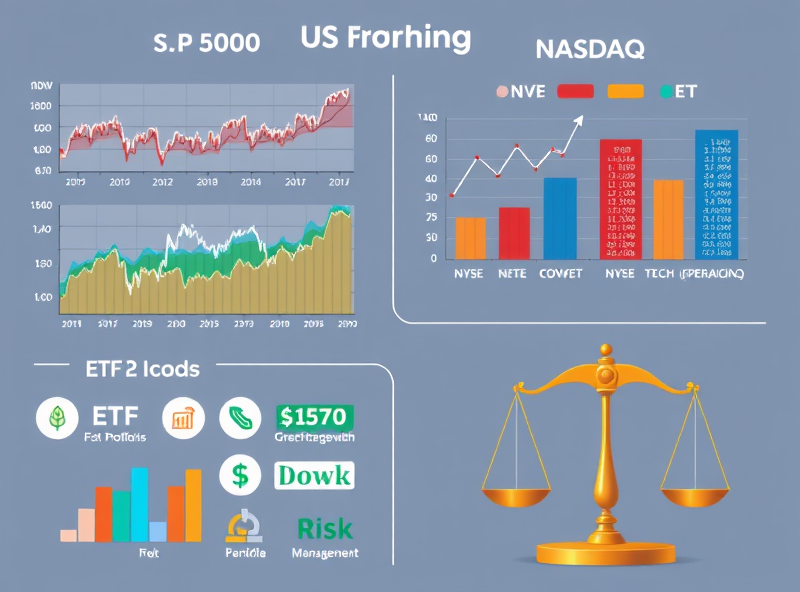Understanding Behavioral Economics in Stock Trading

Behavioral economics is a fascinating field that explores how psychological factors influence financial decisions, especially in stock trading. Unlike traditional economic theories that assume people always act rationally, behavioral economics acknowledges that emotions, biases, and cognitive shortcuts often drive our decisions. For instance, have you ever held onto a losing stock, hoping it would rebound, even when logic suggested otherwise? This is a classic example of the ‘loss aversion’ bias, where the pain of losing feels more intense than the joy of gaining.
Understanding these behavioral patterns can significantly improve your trading strategies. By recognizing biases like overconfidence, herd mentality, or anchoring, you can make more informed and rational decisions. For example, instead of following the crowd during a market rally, take a step back and evaluate the fundamentals of the stock. Similarly, setting clear investment goals and sticking to them can help you avoid impulsive decisions driven by fear or greed.
Incorporating behavioral insights into your stock trading not only helps you manage risks better but also enhances your ability to capitalize on opportunities. Remember, the stock market is as much about psychology as it is about numbers. By mastering both, you can become a more disciplined and successful investor.
Key Psychological Biases Impacting Investors

Investing in the stock market can be as much about managing emotions as it is about analyzing numbers. Behavioral economics sheds light on how psychological biases influence investor decisions, often leading to suboptimal outcomes. Here are some key biases to be aware of:
1. **Overconfidence Bias**: Many investors overestimate their ability to predict market movements, leading to excessive trading or risky investments. Staying humble and relying on data-driven strategies can help mitigate this bias.
2. **Loss Aversion**: Investors often fear losses more than they value equivalent gains. This can lead to holding onto losing stocks for too long or selling winning stocks prematurely. A balanced perspective on risk and reward is crucial.
3. **Herd Mentality**: Following the crowd can feel safe, but it often leads to buying at market peaks or selling during downturns. Independent research and a clear investment strategy can help counteract this tendency.
4. **Confirmation Bias**: Investors tend to seek out information that supports their existing beliefs while ignoring contradictory evidence. Staying open to diverse viewpoints and regularly reassessing your portfolio can reduce this bias.
By understanding these psychological biases, you can make more rational investment decisions and improve your long-term financial outcomes. Remember, self-awareness is a powerful tool in navigating the complexities of the stock market.
Behavioral Patterns and Emotional Triggers

When it comes to stock investing, our emotions and behavioral patterns often play a bigger role than we realize. Behavioral economics explores how psychological factors influence our financial decisions, often leading us to act irrationally. For instance, fear of loss can cause investors to sell stocks prematurely, while overconfidence might lead to risky investments without proper research. Recognizing these emotional triggers is the first step toward making more rational decisions. Strategies like setting clear investment goals, diversifying your portfolio, and sticking to a disciplined plan can help you overcome these biases. Remember, the stock market rewards patience and informed decision-making over impulsive reactions.
Effective Strategies to Overcome Biases

Investing in the stock market can be an emotional rollercoaster, and our decisions are often influenced by cognitive biases that lead to suboptimal outcomes. Behavioral economics teaches us that recognizing and addressing these biases can significantly improve our investment strategies. Here are some effective strategies to overcome common biases:
1. **Confirmation Bias**: This occurs when we seek out information that supports our existing beliefs while ignoring contradictory evidence. To counter this, actively seek diverse perspectives and challenge your assumptions. For example, if you believe a particular stock will perform well, research opposing viewpoints to ensure a balanced analysis.
2. **Overconfidence Bias**: Many investors overestimate their knowledge or ability to predict market movements. To avoid this, set realistic expectations and rely on data-driven decisions rather than gut feelings. Diversifying your portfolio can also help mitigate risks.
3. **Loss Aversion**: People tend to fear losses more than they value gains, which can lead to holding onto losing stocks for too long. Combat this by setting clear exit strategies and sticking to them, regardless of emotional attachment.
4. **Herd Mentality**: Following the crowd can lead to buying at market peaks or selling during downturns. Instead, focus on your long-term investment goals and conduct independent research before making decisions.
By understanding these biases and implementing strategies to counteract them, you can make more rational and informed investment decisions. Remember, the key to successful investing lies in staying disciplined and maintaining a long-term perspective.



